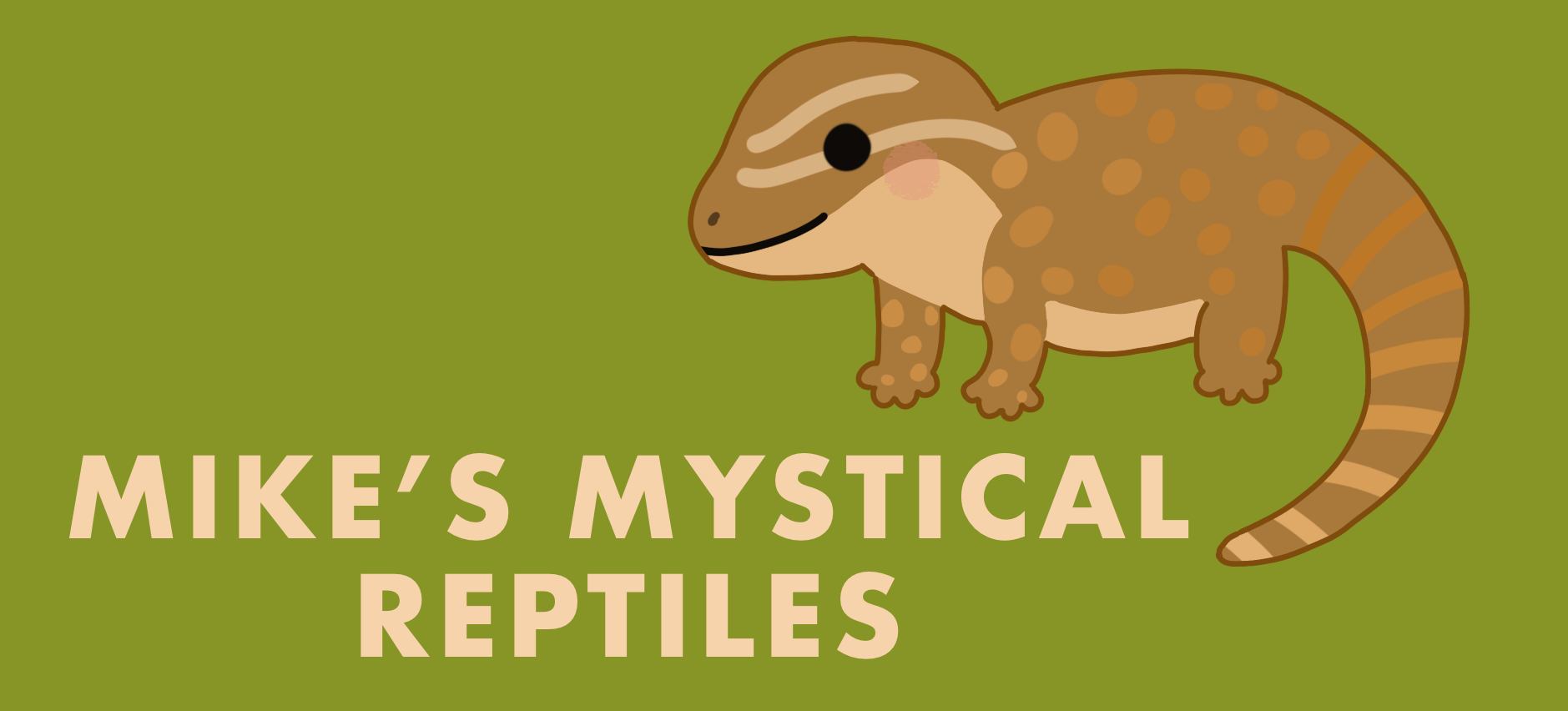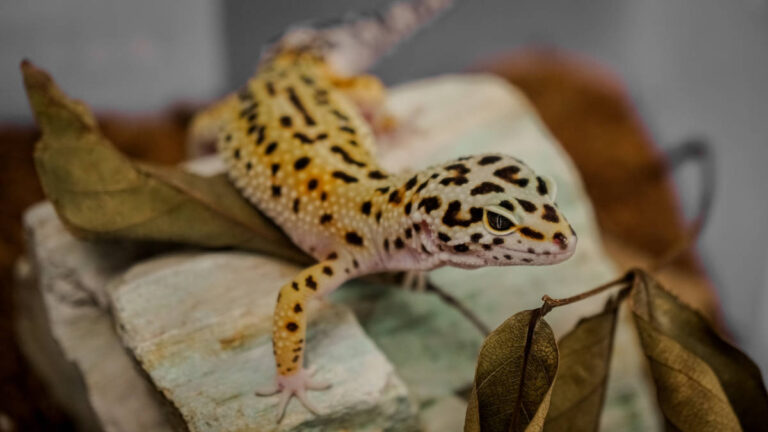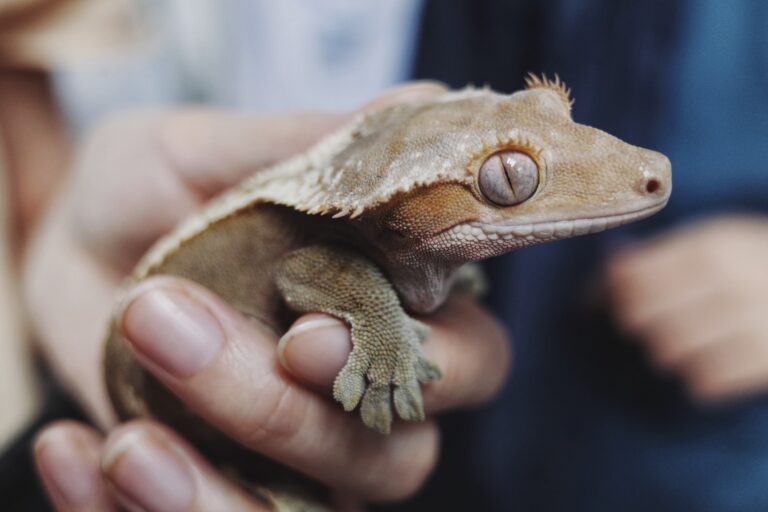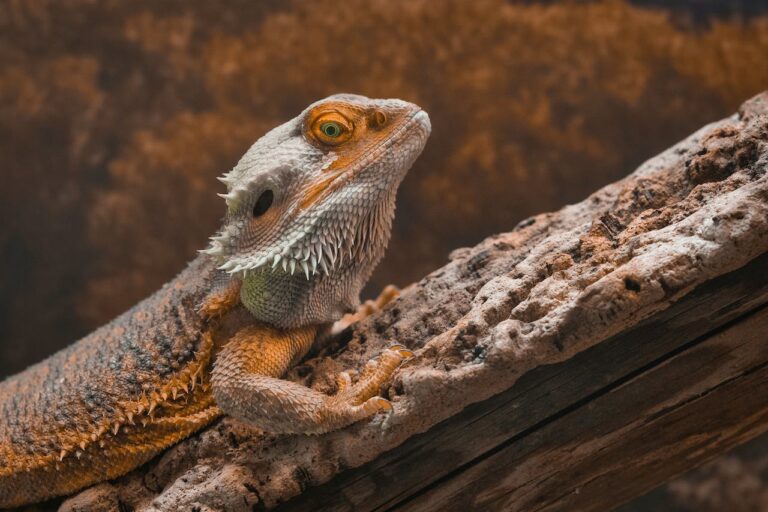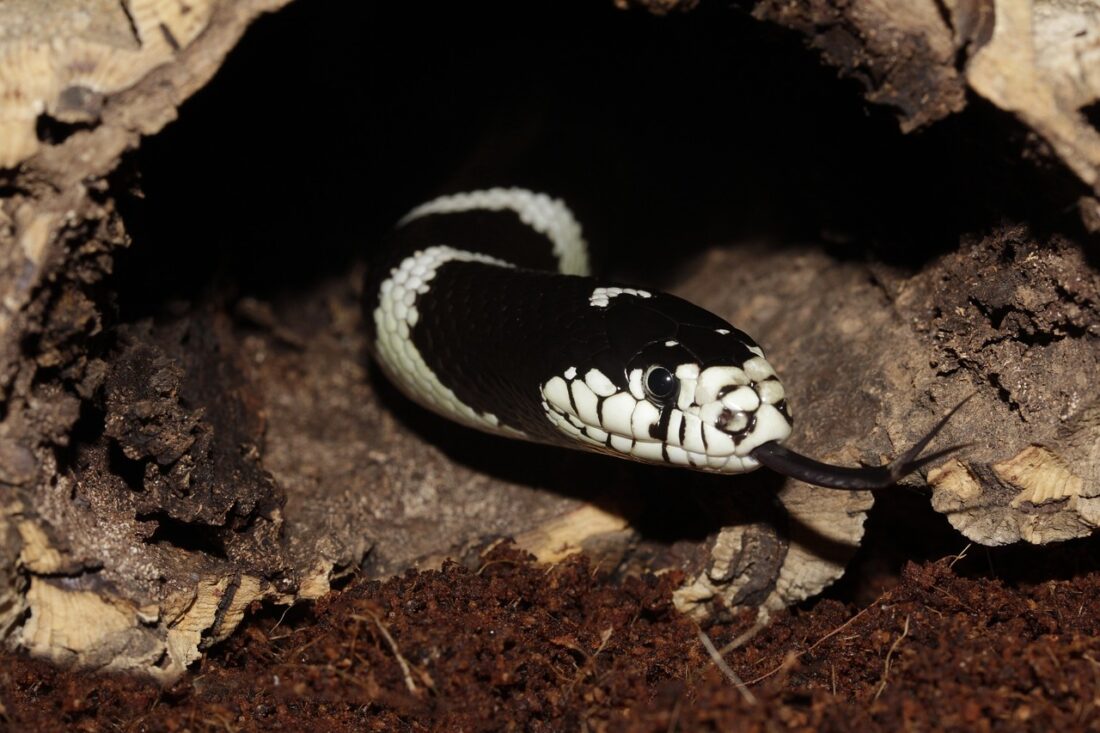Bee Pollen For Reptiles: A Comprehensive Guide
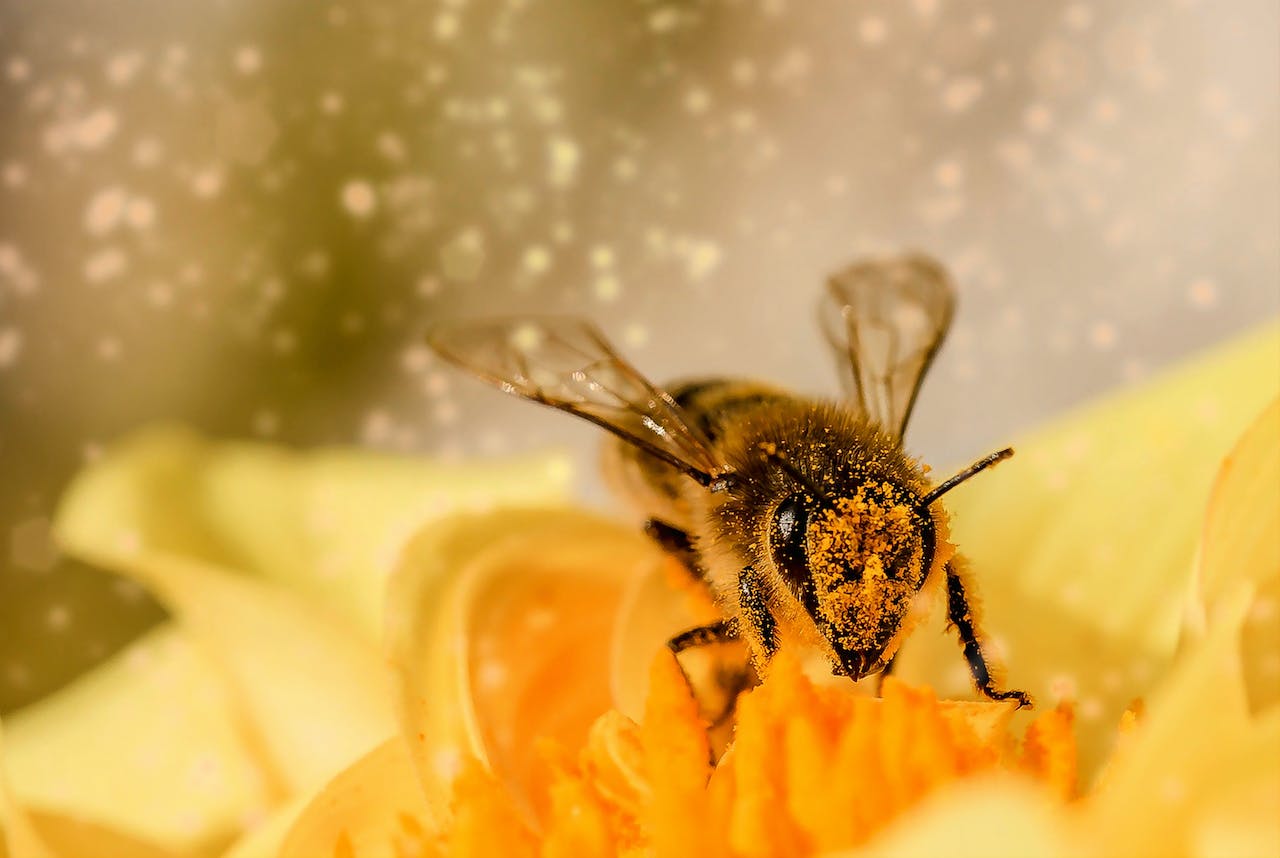
Introduction
Bee pollen for reptiles? Who would have thought that such a seemingly unexpected food item could lead to remarkable benefits for our scaly companions?
In this comprehensive guide, we’ll explore the wonders of bee pollen and its potential to enhance the well-being of reptiles.
Reptile enthusiasts are increasingly turning to this natural powerhouse of nutrients as a supplement, and the positive experiences shared by many owners highlight its promising role in promoting optimal health for our reptile friends.
I recently incorporated bee pollen into my crested gecko’s diet, and the results were nothing short of impressive—my gecko appears much more energetic and lively!
This is just my experience, but as we dive into the evidence-backed details, you’ll discover why more and more reptile owners are considering bee pollen for reptiles as a valuable addition to their pets’ nutrition.
*This will be a detailed, lengthy blog post that is comprehensive and evidence-backed. Enjoy!
What is Bee pollen?
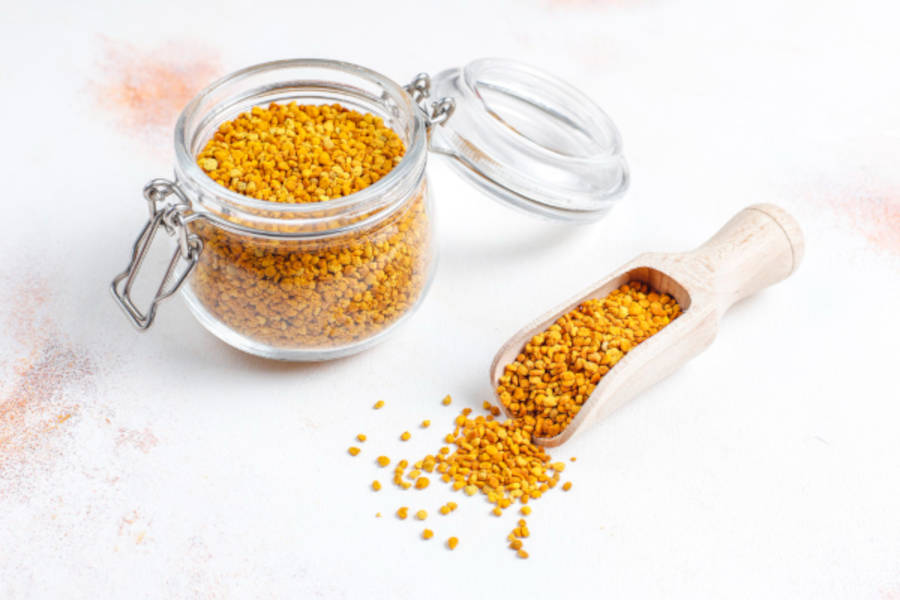
Bee pollen is a natural substance collected and processed from the pollen of flowers with the support of bees. It is known for its rich nutritional content, including essential amino acids, minerals, proteins, vitamins, antioxidants, enzymes, and bioflavonoids.
Bee pollen is often used as a dietary supplement for reptiles, such as bearded dragons, crested geckos, chameleons, iguanas, and tortoises, to provide them with additional nutrients and support their overall health.
Nutritional Composition
As mentioned before, bee pollen is extremely nutritious. Its nutritional profile encompasses a huge range of vital nutrients. Several sources outline the nutritional breakdown of bee pollen as follows:
Essential Nutrients:
- Carbohydrates: 13-55%
- Proteins: 10-40%
- Lipids/Fats: 1-13%
- Crude Fiber: 0.3-20%
- Ash Content: 2-6%
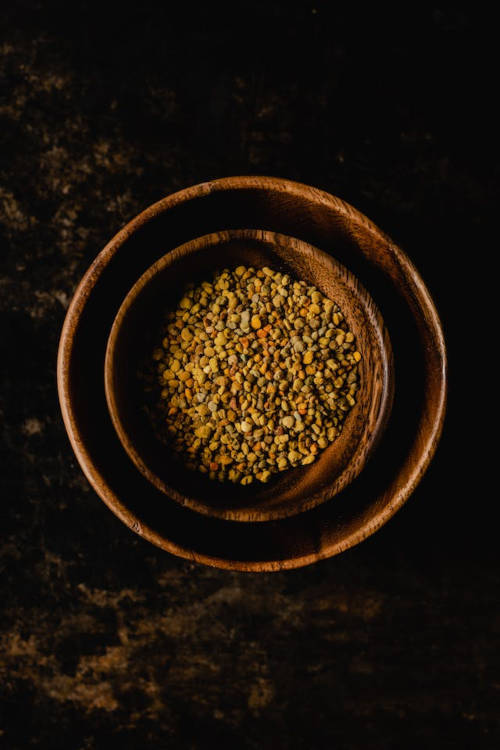
On average, proteins average 22.7% and include several essential amino acids including leucine, valine, isoleucine, phenylalanine, methionine, lysine, threonine, histidine, and tryptophan. Digestible carbohydrates average 30.8%.
In addition, bee pollen contains a wide spectrum of vitamins, including fat-soluble (A, E, D), and water-soluble (B1, B2, B6, and C). There is also a diverse number of minerals. They include boron, calcium, chlorine, copper, iodine, iron, magnesium, manganese, molybdenum, phosphorus, potassium, silica, sodium, titanium, and zinc.
The fatty acids that contribute to the nutritional richness of the pollen are caproic, caprylic, capric, lauric, myristic, palmitic, palmitoleic, stearic, oleic, linoleic, and arachidic acids.
Enzymes and coenzymes include amylase, catalase, diaphorase, diastase, lactic dehydrogenase, pectinase, phosphatase, saccharase, and succinic dehydrogenase.
However, we must consider that there could be a decent amount of nutritional content variability, as factors like the plant source, collection season, soil composition, and geographical origin could affect the nutrition.
The production of bee pollen includes several steps:
How is Bee Pollen Produced?
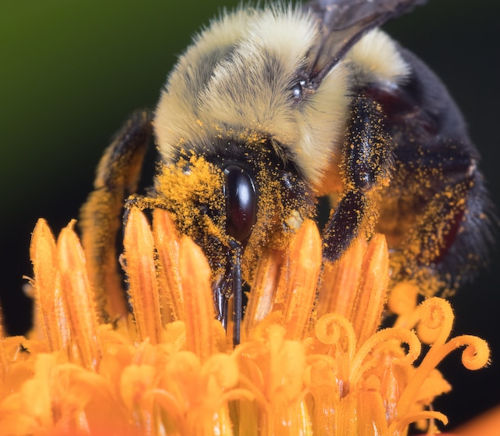
- Collection: The worker bees, known as foragers, collect pollen from the anthers of flowering plants during their flight to collect pollen. The gathered pollen is stored in specialized baskets on the hind legs of the foragers, called corbiculae, and transported back to the hive.
- Packing: The collected pollen is not immediately ready to use once it is in the hive. It instead has to undergo further processing. The non-flying worker bees in the hive moisten the pollen with saliva and fragment the pollen into different pieces. The pollen is now ready to be packed into the honeycomb cells. Next, a thin layer of honey and wax is added to the packed pollen, creating a nutritional substance known as “bee bread”. It is now ready for the fermentation process.
- Fermentation and Preservation: The bee bread then undergoes anaerobic fermentation. This fermentation process occurs in the absence of oxygen and is vital for conditioning the pollen and improving its digestibility. This process also creates lactic acid as a byproduct, a natural preservative for the bee bread. This allows the bee bread to be used for a long time.
- Enzymatic Activity: Next, bees add their glandular secretions to the bee bread. It contains enzymes and acids that help break down complex compounds, aiding in the release of nutrients. At this point, the bee bread comes into contact with naturally occurring beneficial microbes, which contribute to the overall nutritional profile and aid in the digestion of the pollen.
- Utilization Within the Colony: The pollen, now fortified bee bread, is available for use for the rest of the bee colony. The pollen stands as a crucial protein source for the colony, providing essential nutrients for the development and sustainability of the hive. In addition, worker bees use pollen as a key ingredient in the production of royal jelly, a food item fed to developing larvae and the queen bee.
How is Bee Pollen Collected?
Okay, we know how the bees produce the pollen packs. But how do we collect it?
Beekeepers use various techniques and devices to gather pollen, trying their best not to harm the bees or disrupt hive activities. However, it mainly boils down to two techniques for bee pollen extraction. They are:
- Pollen Traps:
- Description: These traps are placed at the entrance of the hive, compelling returning forager bees to travel through a mesh grid. The goal is that the bees may drop some pollen pellets from their hind legs, which would fall into a collection tray. There may be different variations of this trap, but they all serve the same purpose.
- Advantage: This method allows for bee pollen collection without harming the bees or disrupting the hive’s routine.

- Manual removal:
- Description: Certain beekeepers might choose to manually gather pollen by delicately scraping it from the combs using specialized tools. It is crucial to execute manual collection with caution, aiming to avoid any interference with the hive’s regular activities and guaranteeing that the bees retain a sufficient pollen supply for their own needs.
- Advantage: Manual collection gives the beekeeper more control over the collection process, as the amount taken can be scaled back if needed. It also ensures quality and freshness as the pollen is high in moisture and protein.
Whether or not beekeepers use pollen traps or manually remove the pollen, they should consider the strength and health of the colony before doing so.
It is important for beekeepers to balance collecting bee pollen for their own use and ensuring that the bee colony has enough pollen reserves for its nutritional needs, especially during periods of pollen dearth. (a shortage of nectar-producing flowers)
Scientific Studies and Research on Bee Pollen
Yes, there is a LOT of anecdotal evidence on bee pollen, but what about actual studies and scientific evidence?
Here, I’ve gathered evidence from three research papers regarding the amazing properties and health benefits of bee pollen. The first two examine the exceptionally dense nutritional composition of the pollen as well as its amazing healing properties. (I’m not exaggerating, I was shocked as I read… PS: it may play a role in anti-cancer research!)
The third study focuses on the intake of pollen by reptiles, demonstrating its potential usefulness in our reptile’s diet.
Study 1: Health Benefits of Bee Pollen and Bee Bread
Study name: “Bee Collected Pollen and Bee Bread: Bioactive Constituents and Health Benefits“
In this study, data collected from bee pollen (BP) and bee bread (BB) was evaluated for an in-depth analysis of their health properties and role in food nutrition.
In vitro studies, BP and BB extracts were shown to inhibit the growth of some cancer cell lines via mechanisms like apoptosis.
One example: “Nine human-derived cancer and non-cancer continuous cell lines (HEP—larynx cancer, CHANG—liver cancer, HEF—human embryo fibroblast, RT112—bladder cancer, SUZA cancer of the testis, DU145, 1013L, LNCaP—prostate cancer, MCF-7—breast cancer) were employed to evaluate the relative in vitro activity of the pollen extract, Cernitin T-60. The results showed that the androgen-insensitive 1013L and DU145 cells demonstrated significant growth inhibition, predominantly on the 4th day.” (pg. 12)
In simpler terms, the researchers used nine different types of human cell lines, some related to cancer (larynx, liver, bladder, testis, prostate, breast) and others not cancerous (human embryo fibroblast).
They wanted to see how effective a pollen extract called Cernitin T-60 was in stopping the growth of these cells in a laboratory setting.
The findings revealed that two types of cancer cells (1013L and DU145), which are not responsive to a hormone called androgen, experienced a significant slowdown in their growth, especially on the fourth day of the experiment, when treated with the pollen extract.
This suggests that the pollen extract may have inhibitory effects on the growth of these specific cancer cells.
Example 2: “Pollen extracts also demonstrate significant anti-inflammatory activities. In a study from 2010, BP (300 mg/kg) moderately suppressed the carrageenan-induced paw oedema. The water extract (300 mg/kg) showed minor inhibitory activity, while the ethanol extract (100 and 300 mg/kg) showed a relatively strong and significant inhibition with a mean % swelling of 48.4 and 43.5, respectively. The authors concluded that the ethanol extract shows an effective anti-inflammatory activity through the inhibition of NO production and cyclooxygenase-2 (COX-2) [56]. Additionally, BP affects the release of insulin-like growth factor I (IGF-I) and steroid hormones (estradiol and progesterone), as well as the expression of markers of apoptosis (Bcl-2, Bax and caspase-3) in rat ovarian fragments [57].” (pg. 5)
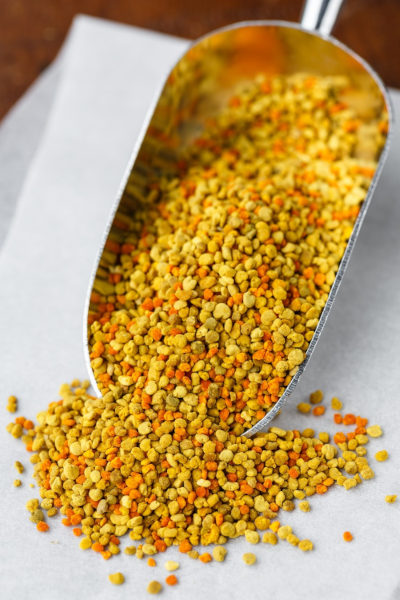
Pollen extracts, particularly from BP, have noteworthy anti-inflammatory effects. A study found that BP, especially its ethanol extract, demonstrated significant inhibition of paw swelling induced by carrageenan. T
he ethanol extract, at doses of 100 and 300 mg/kg, showed strong anti-inflammatory activity by inhibiting the production of nitric oxide (NO) and cyclooxygenase-2 (COX-2).
Moreover, BP influences the release of insulin-like growth factor I (IGF-I) and steroid hormones (estradiol and progesterone), along with the expression of apoptosis markers (Bcl-2, Bax, and caspase-3) in rat ovarian fragments.
These findings suggest the potential of BP in modulating inflammation and hormonal processes, indicating its broader impact on health.
In simpler terms, BP has been shown to be quite potent in fighting inflammation, which is a key factor in various health conditions.
The ability of BP to influence hormone release and markers of cell health further highlights its potential as a natural and powerful health-promoting substance.
Study 2: Bee Pollen’s Therapeutic Potential and Chemical Composition
Study name: Bee Pollen: Chemical Composition and Therapeutic Application
This paper provides a thorough overview of the healing possibilities and health benefits of bee pollen, which is a nutrient-rich product from bees containing proteins, carbohydrates, fats, vitamins, minerals, and antioxidants.
Bee pollen has various positive effects, acting against bacteria, reducing inflammation, combating cancer, supporting liver health, managing diabetes, preventing heart disease, boosting the immune system, and more.
It even aids in healing wounds, has pain-relieving properties, and helps with allergies. Both animal and human studies confirm BP’s nutritional value as a supplement, and its ability to improve heart health, support detoxification, extend lifespan, and complement standard treatments for chronic illnesses.

Instead of going over specific benefits and chemical compounds, I will list a detailed summary of what this paper highlights.
Introduction
- Bee pollen contains over 250 substances including vitamins, minerals, proteins, lipids, carbohydrates, and phenolic compounds.
- The exact composition depends on the plant source, geography, soil, climate, and bee species. National data shows average values.
- Bees collect pollen on hind legs in pollen baskets and transport it back to the hive where it’s packed into cells with honey and wax.
Collection Methods
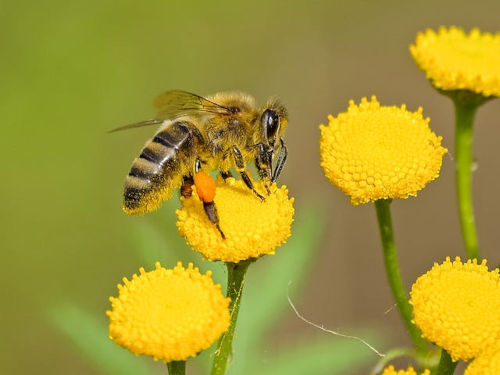
- Special pollen traps on beehives retrieve part of pollen loads from returning bees, causing them to work harder to gather more pollen.
- Each colony produces 50-250g of pollen daily, 1-7kg annually.
- Bee bread is made by mixing retrieved pollen with warm honey, allowing it to ferment. It has stronger medicinal effects compared to bee pollen.
Chemical Composition
- BP contains 22.7% proteins including 10.4% essential amino acids like methionine, lysine, and leucine.
- 40.7% digestible carbs like fructose, glucose, sucrose.
- 12.8% lipids such as essential fatty acids, phospholipids, and phytosterols.
- Vitamins A, E, and D are fat soluble; B1, B2, B6, and C are water soluble at 0.7% total.
- 1.6% minerals – calcium, phosphorus, sodium, potassium, iron, zinc, manganese.
- Bioactive phenolic compounds (1.6%) include flavonoids like quercetin, tannins, and phenolic acids.
- It also contains enzymes, coenzymes, and nucleic acids (RNA).
Therapeutic Effects
- Hypolipidemic: Lowers serum lipids 20-35%. Used in hyperlipidemia, atherosclerosis, and post-infarction therapy.
- Hepatoprotective: Restores liver function from damage by drugs, and toxins. Detoxifying effect.
- Anti-inflammatory: Comparable to NSAID drugs, prevents inflammatory enzyme activity. Used in arthritis.
- Hypoglycemic: Manages diabetes due to modulation of insulin, hormones, and metabolism.
- Antimicrobial: Flavonoids & acids are effective against bacteria like S. aureus and fungi e.g. Candida.
- Antiallergic: Stabilizes mast cells, and blocks histamine release. Useful for seasonal allergies.
- Anticancer: Specific components may stimulate immunity against cancer cells. Further research is needed.
- Nutritional/Dietary: Supplement for recovery, malnutrition, and cachexia. Extends lifespan in animal models.
Administration
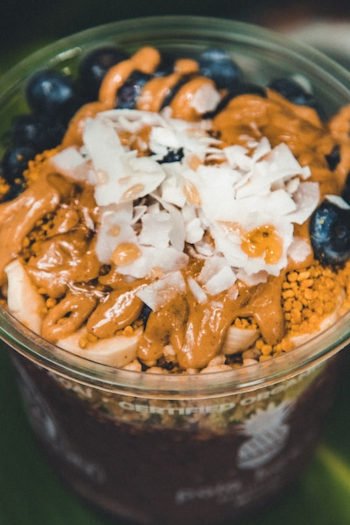
- Dosage 20-40g daily for adults, less children. Divided doses before meals are optimal.
- Digestibility is enhanced by grinding and mixing with yogurt, milk, and juices.
- Water activates and releases components from pollen grains over 2-3 hours.
- In unprocessed pollen, only 10-15% was utilized versus 60-80% when pretreated.
- Can adjust dosage based on combination with other drugs or bee products.
Burn Wound Healing
- Accelerates granulation, and epithelialization stages. Anti-inflammatory and antimicrobial properties are useful.
- Kaempferol strengthens the connective tissue matrix and prevents fluid leaks.
- BP method avoids risks like infection, and scarring seen in conventional treatments.
- The proposed effect is comparable to silver sulfadiazine but cheaper, with minimal side effects.
- Extract ointment shows antimicrobial effects in studies with burn wound bacteria.
Conclusion
- Extensive research on the nutritional and medicinal properties of bee pollen has been done.
- Wide range of demonstrated therapeutic effects and mechanisms of action.
- Requires more clinical trials but promising supplementary therapy for burns, infections, and chronic conditions.
- Apitherapy (therapy using bee products) is well established in Eastern Europe, increasing recognition for integrative medicine worldwide.
Study 3: Nutritional Advantages of BP for Exotic Animals (Specifically Tortoises)
Study name: Nutritional Advantages and the Impact of Bee Pollen in the Feed of Exotic Animals
The goal of this research article was to discover the possibility of using bee pollen as a supplement for exotic animals, specifically the Testudo genus of tortoise.
We have already learned from research the powerful nutritional benefits pollen has on all animals, including humans. From research in anti-cancer treatments to reducing bodily inflammation, BP is certainly a “hyper-super food”.
This study focused on the digestibility of bee pollen in the tortoises. For the experiment, 11 tortoises were used (5 of the Testudo marginata species, and 6 of the horsfieldii species). They were fed varying summer fruits with pollen sprinkled on them.
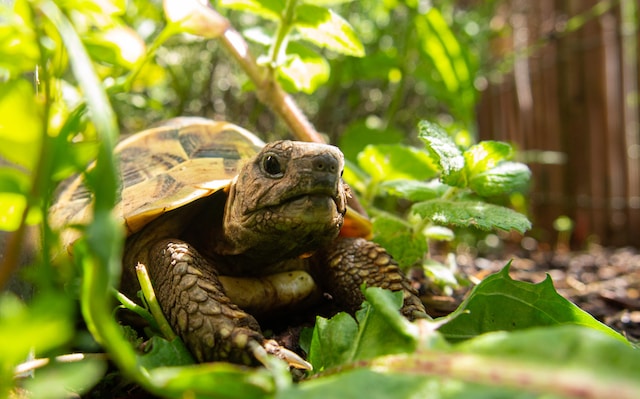
Fecal samples were taken every 12 hours, starting with the first 12 hours after the initial consumption. Four samples were taken at the 12, 24, 36, and 48-hour marks to examine if there were any trace undigested pollen grains.
Results: From all 11 tortoises and the 44 fecal samples taken, there were no traces of undigested pollen grains. By examining the ratio between full and empty grains, the researchers were able to that most of the pollen grains were digested successfully. There was also no difference between the digestibility of old and young tortoises.
While we can conclude that all of the pollen grain was successfully digested, we cannot make any hard claims that all the nutrients from the pollen were absorbed. Nutrients may have been excreted in the tortoises’ feces.
However, the results do show that “both tortoise species were able to penetrate the hard exine of the pollen grains”. (pg. 27)
Takeaways from the Studies
Although additional research is required to establish a direct link between bee pollen and enhanced reptile health, the existing findings strongly indicate a significant connection between bee pollen and overall animal well-being.
The Nutritional Benefits of Bee Pollen for Reptiles
Overview of Essential Nutrients
Bee pollen serves as a rich source of essential nutrients for reptiles, constituting a valuable supplement to their diet. Its nutritional advantages encompass proteins, amino acids, vitamins, minerals, and enzymes.
With over 200 biologically active substances, bee pollen includes carbohydrates, proteins, fatty acids, lipids, vitamins, enzymes, minerals, and antioxidants. The granules of pollen boast a specific nutritional composition of approximately 30% carbohydrates, 23% protein, 5–10% water, 6% fats, and 4–15% other substances.

Additionally, bee pollen provides vitamins such as provitamin A (carotenoids), B vitamins (B1, B2, B3, B5, B6, B12), vitamin C, vitamin D, vitamin E, vitamin H (biotin), vitamin K, and various minerals like calcium, iron, magnesium, and zinc. These vitamins are responsible for various physiological processes in a reptile.
Enzymes and co-enzymes found in bee pollen include amylase, catalase, diaphorase, and lactic dehydrogenase. These enzymes contribute to a reptile’s metabolic and digestive process.
Comparison with Other Reptile Supplements
- Nutrient Diversity:
- Bee Pollen: It is a natural and nutrient-dense source, providing a broad spectrum of essential nutrients, including proteins, amino acids, vitamins, minerals, and enzymes.
- Other Supplements: Some reptile supplements may focus on specific nutrients, potentially lacking the comprehensive nutritional profile found in bee pollen.
- Bioavailability:
- Bee Pollen: The bioactive substances in pollen are naturally occurring and may be more readily absorbed by reptiles due to their natural form.
- Other Supplements: Synthetic supplements may have lower bioavailability or may require additional processing for optimal absorption.
- Biological Activity:
- Bee Pollen: Pollen exhibits biological activity beyond basic nutrition, including anti-inflammatory, antibacterial, and antioxidant properties.
- Other Supplements: Some supplements may primarily provide nutritional support without additional bioactive benefits.
- Palatability:
- Bee Pollen: Many reptiles find bee pollen palatable, making it easier to incorporate into their diet.
- Other Supplements: The taste and texture of synthetic or processed supplements may be less appealing to some reptiles.
- Holistic Nutrition:
- Bee Pollen: Bee pollen offers a holistic nutritional package with over 200 biologically active substances, addressing various aspects of reptile health.
- Other Supplements: Some supplements may focus on specific nutritional needs, potentially overlooking the synergistic effects of a diverse nutrient profile.
- Natural Source:
- Bee Pollen: Being a natural product, bee pollen aligns with a reptile’s evolutionary diet, potentially contributing to a more balanced and species-appropriate nutrition.
- Other Supplements: Synthetic supplements may not replicate the complexity and natural balance found in bee pollen.
- Versatility:
- Bee Pollen: Pollen’s versatility extends to its potential benefits in wound healing, analgesic properties, and antiallergic effects.
- Other Supplements: Some supplements may be formulated for specific health concerns, but they may lack the multifunctional aspects found in bee pollen.
It’s important to emphasize that the comparison between bee pollen and other reptile supplements is not intended to discredit the value of alternative supplements.
Instead, the goal is to highlight the exceptional nutritional profile of pollen and encourage its incorporation into a reptile’s diet.
Bee pollen stands out for its natural richness in proteins, amino acids, vitamins, minerals, and enzymes, offering a holistic approach to nutrition with potential additional health benefits.
However, it’s equally crucial to recognize that a well-rounded diet for reptiles may involve a combination of supplements.

Utilizing a multivitamin and calcium powder, for instance, can ensure that reptiles receive nutrients that support healthy bone growth and decrease the risk of developing metabolic bone disease.
We should also acknowledge that in the wild, many species of reptiles naturally consume bee pollen in their diet. For instance, nectar-loving species of geckos consume large amounts of pollen on a daily basis.
How Bee Pollen Contributes to Overall Health
Bee pollen holds the potential to enhance a reptile’s overall well-being in various ways. Packed with crucial nutrients, including proteins, amino acids, vitamins, minerals, and enzymes, it can positively impact the health of reptiles.
Here are specific ways in which bee pollen can contribute to a reptile’s well-being:
- Reinforced Immune Function: The natural compounds found in bee pollen, such as antioxidants and bioflavonoids, can fortify a reptile’s immune system, bolstering its ability to combat diseases and infections.
- Digestive Assistance: Enzymes present in bee pollen aid in digestion and foster a healthy gut flora, ensuring optimal nutrient absorption and digestive functionality.
- Elevated Energy Levels: The carbohydrates within bee pollen act as a valuable energy source for reptiles, supplying the additional energy required for their daily activities and growth.
- Skin and Shedding Vitality: The pollen contains essential nutrients like vitamins A, E, and C, contributing to the health of reptile skin and scales, supporting the overall well-being of their skin and shedding processes.
Furthermore, bee pollen can be utilized to gut load feeder insects before they are fed to reptiles. This ensures that reptiles indirectly receive the nutritional advantages of the pollen through their prey.
It is crucial to emphasize that bee pollen should serve as a supplement rather than the main source of nutrition for reptiles.
Choosing the Right Bee Pollen for Reptiles
There are just too many reasons why we should incorporate bee pollen as a supplement for our reptiles. With so many brands and qualities to choose from, where do we start?
Different Types of Bee Pollen
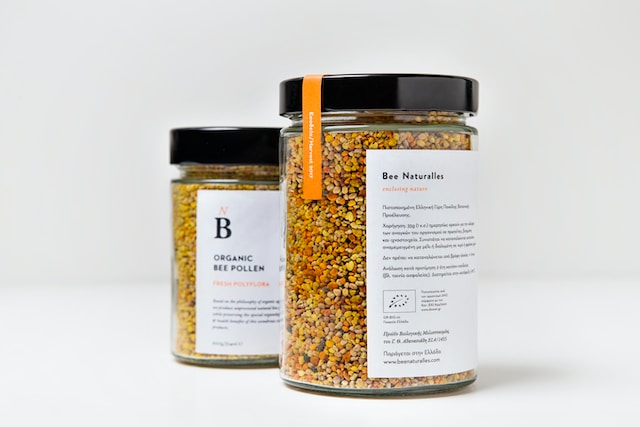
For reptile owners looking to boost their pets’ nutrition, bee pollen comes in three main types, each with its own features:
- Dried Bee Pollen: Originally gathered in a fresh state, this pollen gets dried out, which reduces its nutrients. Even though it’s easy to store, the drying process takes away some of the superfood benefits. This might not be the best choice for reptiles since it doesn’t offer a lot of health perks.
- Pill-form Pollen: Similar to dried pollen, the pill version often has more fillers than actual pollen. This means it might not provide as many health benefits for reptiles, making it less ideal for supplementation. It might also be a hassle opening up the pills when it’s time to feed (not recommended for your reptiles or pets)
- Fresh Pollen in Granule Form: Considered the best for nutritional benefits, fresh bee pollen in granules keeps its nutrients and freshness when stored properly, like in the fridge or freezer. This living product, with colors ranging from white to black, is an excellent choice for reptile owners. The granule form is easy to mix into your reptile’s diet, offering a rich mix of proteins, amino acids, lipids, carbohydrates, minerals, vitamins, and polyphenols.
So, for reptile care, fresh bee pollen in granule form is a top-notch option, providing a versatile and nutritious supplement to keep your scaly friends healthy and happy.
Quality Considerations
When sourcing bee pollen for your reptile’s diet, it’s crucial to prioritize quality and safety. Here are some guidelines on where to find bee pollen for your reptile:
- Reputable Pet Supply Stores: Some pet supply stores specialize in reptile care and may offer bee pollen as a supplement. Look for well-established stores with a reputation for providing high-quality products for reptiles.
- Specialty Exotic Pet Shops: Specialty shops that cater to exotic pets, including reptiles, may carry bee pollen or be able to guide you to reliable sources. These shops often have knowledgeable staff who can provide advice on the best products for your specific reptile.
- Online Reptile Supply Retailers: Many reputable online retailers specialize in reptile supplies. Check well-known websites that focus on exotic pets and ensure they have positive reviews from other reptile owners.
- Beekeepers and Local Farmers: Local beekeepers or farmers who produce and sell bee products might be a good source. Make sure they follow proper harvesting and processing practices to ensure the purity and quality of the pollen.
- Health Food Stores: Some health food stores carry bee pollen for human consumption, and while it may be suitable for reptiles, be cautious about additives or processing methods. Ensure that the product is free from harmful substances that could be detrimental to your reptile.
If possible, I highly recommend picking up fresh bee pollen from your local farmers market or beekeeper, as it is usually the freshest and purist pollen you can find. It also supports the local beekeepers and keeps up sustainable beekeeping practices.

Also, consider buying bee pollen from areas a little farther from where you are, as the nutrient profile of flowers in different areas produces pollen that is different and may contain different health benefits.
Regardless of where you source bee pollen, consider the following tips:
- Check for Purity: Choose pollen that is free from contaminants, pesticides, and additives.
- Verify the Source: If possible, ask about the source of the pollen. Knowing the geographical location and the types of plants the bees have visited can provide insight into the potential nutritional profile.
- Read Reviews: Before making a purchase, read reviews from other reptile owners to ensure that the pollen has been well-received and is considered safe for reptile consumption.
I always recommend consulting with a veterinarian or a reptile care specialist before introducing any new supplement, including bee pollen, to your reptile’s diet. They can provide guidance based on the specific needs and health conditions of your pet.
Potential Contaminants and How To Avoid Them
Bee pollen can be contaminated by various substances, so it is crucial to be aware of potential contaminants to ensure the safety of the product. Some common contaminants of bee pollen include:
- Pesticides and Herbicides: Bees may collect pollen from plants that have been treated with pesticides or herbicides. Residues of these chemicals can be present in the pollen.
- Heavy Metals: Pollen can accumulate heavy metals from the soil in which the plants grow. Common heavy metals include lead, cadmium, and mercury.
- Microorganisms: Bee pollen can harbor bacteria, molds, yeast, and other microorganisms if proper hygiene and processing methods are not followed. Contamination can occur during the collection, handling, or storage of the pollen.
- Fungal Toxins (Mycotoxins): Improper storage conditions can lead to the growth of fungi on bee pollen, producing mycotoxins, which can be harmful if consumed.
- Environmental Pollutants: Bee pollen can absorb environmental pollutants from the air, water, and soil. This can include pollutants such as industrial chemicals and particulate matter.

To minimize the risk of contamination, it’s advisable to:
- Source from Reputable Suppliers: Choose pollen from reputable suppliers who follow good harvesting and processing practices. This is especially important if you are buying bee pollen for consumption.
- Understand the Source: Know the geographical origin of the pollen and the types of plants the bees collect pollen from. This information can provide insights into potential contaminants.
- Check for Third-Party Testing: Some manufacturers conduct third-party testing for contaminants. Products that have been tested for purity and quality may be a safer choice.
- Look for Organic Options: Organic pollen may be less likely to contain pesticide residues, as organic farming practices typically avoid synthetic pesticides.
- Store Properly: If you purchase bee pollen, store it according to the recommended conditions. Proper storage helps prevent the growth of microorganisms and fungi.
Once again, it goes to show that sourcing your pollen from a trusted source that delivers high-quality products is very important.
Incorporating Bee Pollen Into Your Reptile’s Diet
Suitable Reptile Species for Bee Pollen Supplementation
Before supplementing your reptile with bee pollen, it is important to first see if your reptile can safely consume the pollen. Our goal is to improve the health and well-being of our reptiles, and it would be a shame if the thing we thought would help actually harmed them.
Here are a couple of reptile species that are known to safely consume bee pollen:
- Chameleons
- Bearded Dragons
- Leopard Geckos
- Uromastyx
- Crested Geckos or any New Caledonian gecko species
- Iguanas
- Tortoises
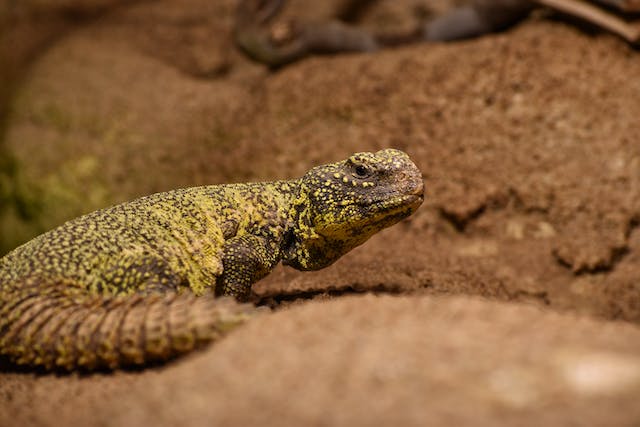
Almost every reptile species should be okay with consuming bee pollen supplements.
If your reptile species consumes any plant matter or feeds on nectar, then it is even more likely that they would consume bee pollen in their natural wild diet.
For reptiles that do not consume plant matter, it is best to dust the feeder insects with the pollen, or gut load them with pollen before feeding.
It’s worth mentioning that bee pollen would probably not benefit most snakes as they get all their nutrition primarily from rodents (at least in captivity).
NOTE: Be completely sure that your specific species of reptile can consume bee pollen before introducing it into its diet. If you are unsure, consider reaching out to other reptile enthusiasts who own that species or getting advice from your vet.
Optimal Dosage Recommendations
The recommended dosage instructions for providing bee pollen to reptiles differ depending on the species. Here are some general suggestions:
- For New Caledonia species, it’s recommended to include a small pinch of pollen in the food 1-2 times a week.
- For bearded dragons and other veggie-loving reptiles, bee pollen can be incorporated into salads 2-5 times per week.
- Bee pollen can be utilized to gut-load feeder insects like crickets before offering them to insect-loving reptiles.
There isn’t an exact science as to the correct amount of pollen to feed reptiles. I would say aiming for around 3-5% of their diet consisting of bee pollen would work for many species.
I would say less is more when using supplements of any kind, as too much could be dangerous for your pet.
Creative Ways to Administer Bee Pollen
Explore these creative approaches to incorporate bee pollen into your reptile’s diet:
- Sprinkle on Food: Apply bee pollen powder directly onto your reptile’s meals, including feeder insects, fruits, or vegetables. This technique is especially beneficial for selective eaters, introducing sweetness and protein to meet the dietary needs of reptiles like leopard geckos or bearded dragons.
- Mix with Diet Supplements: Blend pollen with commercial diet supplements, such as Crested Gecko Diet (CGD), for species like crested geckos and leachies. Sprinkle it over greens for reptiles like bearded dragons or iguanas to enhance their feeding responses and provide extra vitamins and minerals.
- Dust Feeder Insects: For insectivorous reptiles like chameleons, use pollen to dust crickets weekly as part of a nutritious diet. This method boosts the nutritional content of feeder insects, delivering essential nutrients to the reptiles.
- Gut-Load Feeder Insects: Prior to feeding them to reptiles, utilize bee pollen to gut-load feeder insects like crickets (feed the crickets bee pollen). This ensures that reptiles receive the advantages of bee pollen through their regular diet.
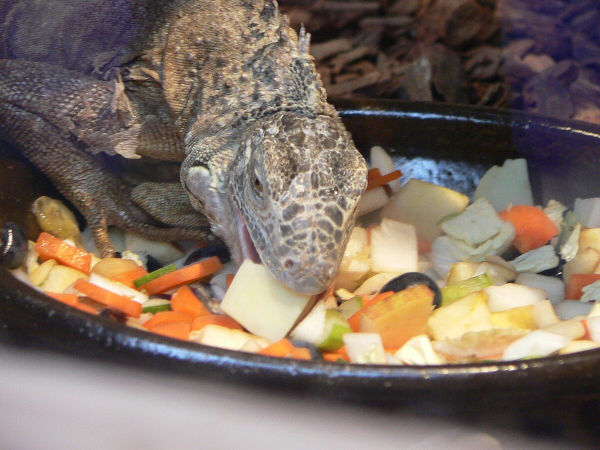
These creative methods will help you to incorporate bee pollen into your pets’ diets, offering crucial nutrients and contributing to their overall health.
Always exercise moderation and include bee pollen as part of a well-balanced diet specific to your reptile species.
Frequently Asked Questions
Can Bearded Dragons Eat Bee Pollen?
Like most reptiles, bearded dragons can safely eat bee pollen without the dangers of toxicity. Bee pollen can be gut-loaded to their insects or sprinkled onto their greens.
What Does Bee Pollen Taste Like?
Bee pollen has a slightly sweet and flowery taste, along with a chalky texture. It’s like raw honey but has an earthy flavor, and some say it might have a bitter aftertaste. You can sprinkle bee pollen on smoothies, salads, granola, or popcorn. It also works well mixed into yogurt, acai bowls, or as a topping for different dishes, adding a unique touch to your food.
Where Can I Buy Bee Pollen?
Bee pollen is available for purchase from different places such as supermarkets, health food stores, and online retailers.
Does Bee Pollen Expire?
Bee pollen does not really “expire”. However, it can retain more nutrients and freshness if stored properly. To make it last longer, it is suggested to keep it in the fridge or freezer. Before eating bee pollen that’s been stored for a while, check for any signs it might have gone bad, like a strange smell or taste.
How To Eat Bee Pollen?
Yes, we humans can also enjoy the health benefits of bee pollen in our diets!

Bee pollen, known for its slightly sweet, floral taste, can be consumed in various ways. It can be eaten raw, added to salads, desserts, or beverages, mixed into foods like smoothies and yogurt, or soaked before consumption. Caution is advised against overheating or baking bee pollen, and individuals with allergies should consult a healthcare professional before consumption due to potential allergic reactions.
Does Bee Pollen Give You Energy?
Bee pollen is rich in carbohydrates, proteins, amino acids, vitamins, minerals, and flavonoids, potentially boosting energy levels. It’s often used by athletes, including racehorses, to enhance performance before competitions. However, more research is needed to establish BP’s direct impact on energy levels.
Does Bee Pollen Need To Be Refrigerated?
Fresh bee pollen should be refrigerated or frozen to prolong its shelf life. In the refrigerator, it lasts about six months, and in the freezer, up to a year. Optimal cool storage preserves nutrients and integrity, while heating should be avoided to prevent nutrient loss. Refrigeration or freezing is crucial to maintain the freshness and nutritional content of bee pollen.
Does Eating Bee Pollen Help With Allergies?
Debates surround the potential impact of bee pollen on allergies. Some claim local bee pollen can alleviate seasonal allergy symptoms by building immunity to allergens. However, caution is advised as bee pollen can trigger allergic reactions, including anaphylaxis, especially in individuals with pollen allergies.

Although bee pollen is thought to have antihistamine properties, scientific evidence supporting its effectiveness is limited.
If you have allergies, consult a healthcare professional before trying bee pollen.
How Do You Store Bee Pollen?
Store bee pollen in the refrigerator, freezer, or a cool, dark pantry, away from sunlight. Proper storage can preserve its nutritional value for about three years.
Conclusion
Okay, that was a lot of information! Here’s a quick recap of what we learned:
- Bee pollen is a natural substance collected from flowers that is incredibly nutrient-dense, containing proteins, amino acids, carbohydrates, vitamins, minerals, antioxidants, and more. It has many health benefits for both humans and animals.
- Bees collect the pollen, bring it back to the hive, and pack it into cells with honey and wax which allows it to ferment, enhancing its nutritional value even further as “bee bread”. Beekeepers then collect the pollen using traps at the hive entrance or manual removal.
- Multiple research studies have shown bee pollen has anti-inflammatory effects, and anti-cancer properties, supports liver health, manages diabetes, boosts immunity, aids wound healing, relieves pain, and more. Both animal and human trials support its medicinal uses.
- Bee pollen contains over 200 biologically active substances including 22.7% protein, 40.7% carbohydrates, 12.8% lipids, 1.6% minerals, vitamins A, E, D, B-complex, and vitamin C, as well as beneficial enzymes, phenolic compounds, and antioxidants.
- Compared to synthetic supplements, bee pollen provides more nutrient diversity, higher bioavailability, additional biological activity beyond basic nutrition, and better palatability. It offers holistic, natural nutrition aligned with species-appropriate diets.
- Bee pollen contributes to overall reptile health by boosting immunity, aiding digestion, increasing energy, supporting skin/shedding, and nutritionally enhancing feeder insects through gut loading.
- Most reptiles can safely consume bee pollen, especially plant-eating species. Recommended dosage varies by species but around 3-5% total diet content is a good baseline.
- Getting high-quality bee pollen from reputable sources ensures purity—free from contaminants like pesticides, heavy metals, bacteria, mold toxins, etc. Proper storage is also crucial.
- Creative ways to feed reptiles bee pollen include sprinkling on insects/plants, mixing with supplements, coating feeders, or gut-loading insects before feeding them. This introduces essential nutrients while encouraging feeding.
Let me know if you need any clarification or have additional questions! There was a wealth of valuable information covered. Are you going to start using bee pollen in your reptile’s diet? Have you used it before? Let me know in the comments below 🙂 I’ll catch you in the next one!
